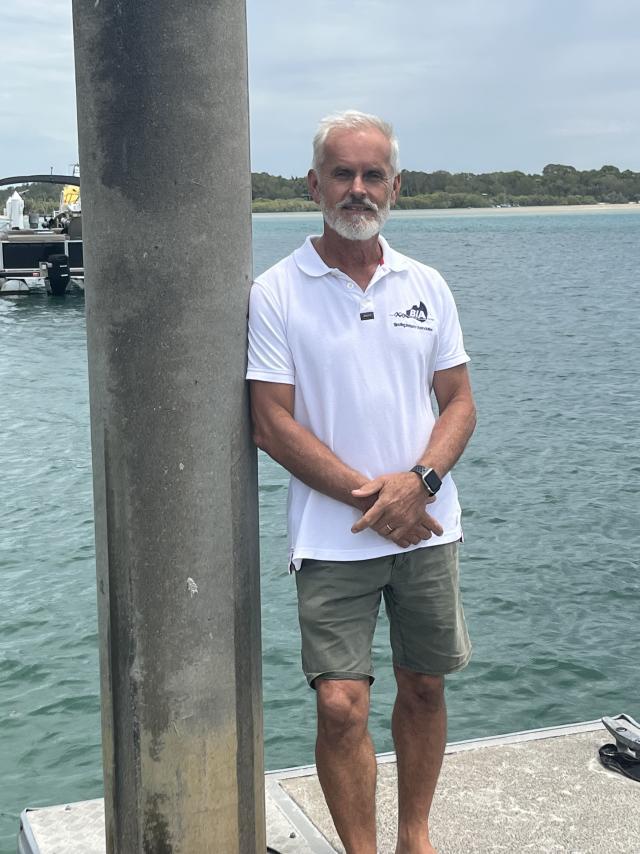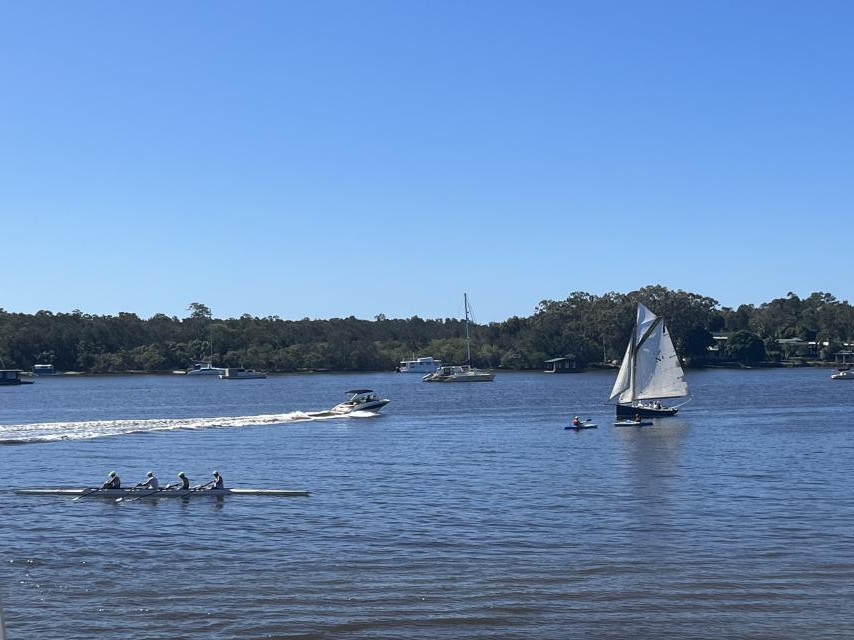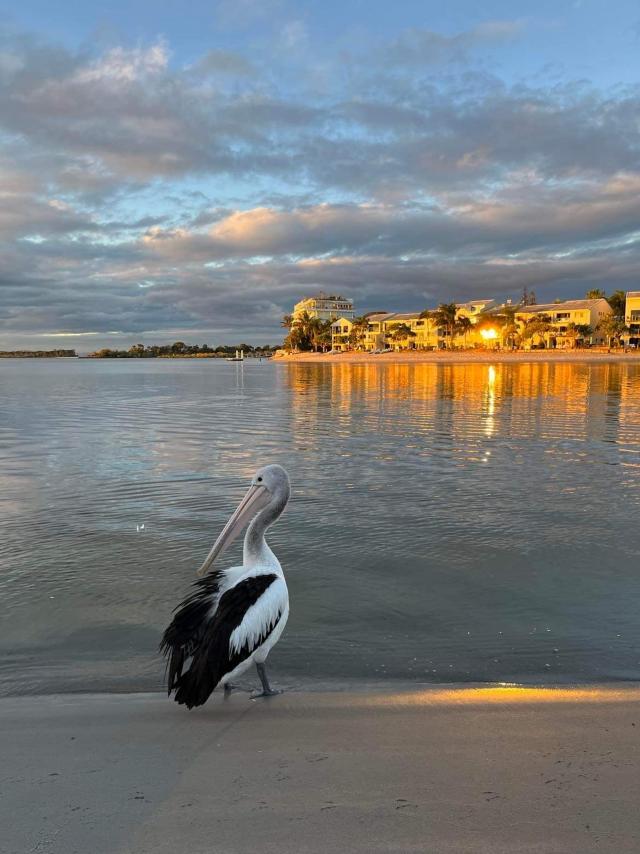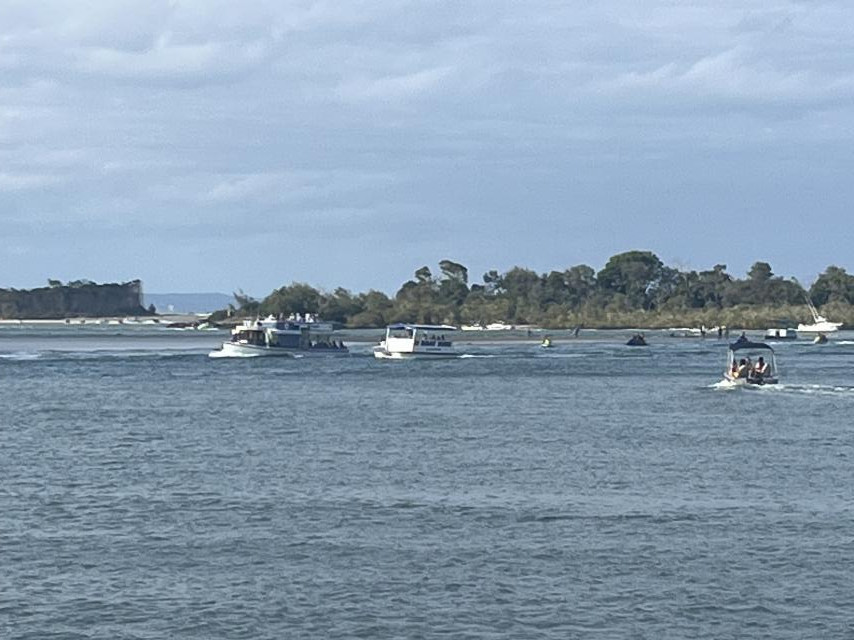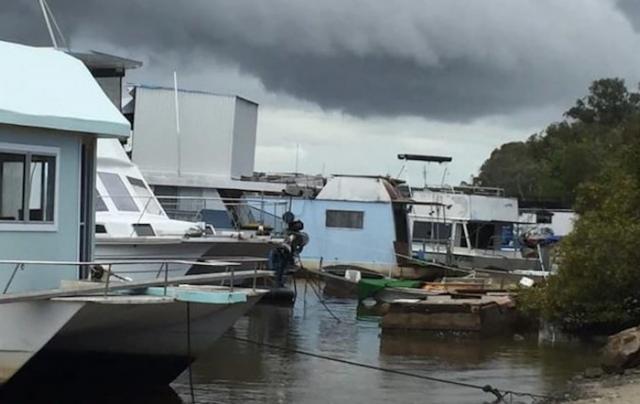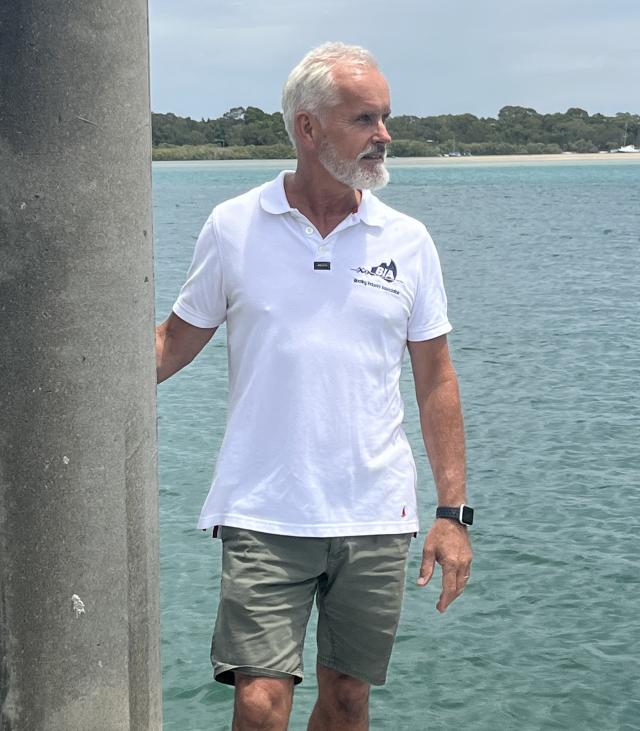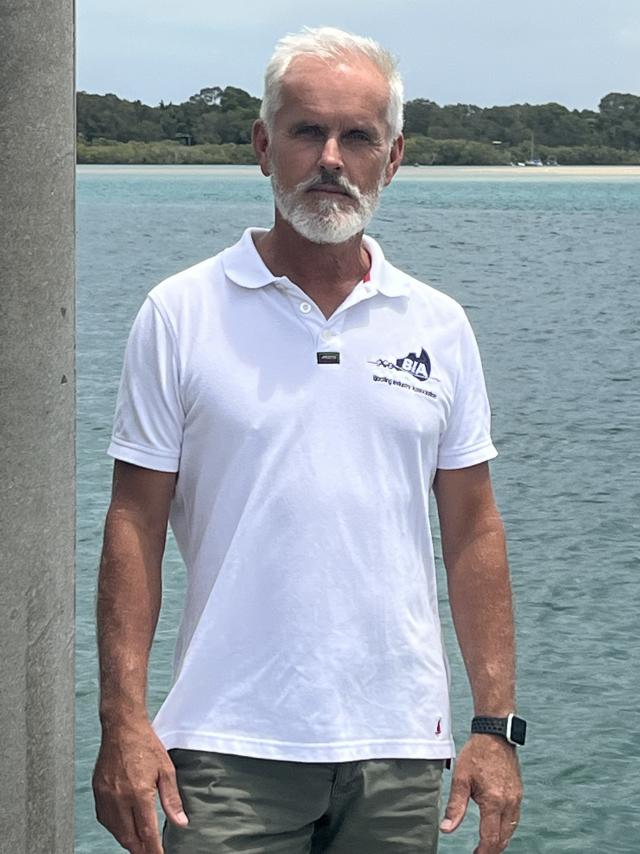Precede
While we await an outcomes report from this summer’s Maritime Safety Queensland river management community consultation survey, which proposed a raft of changes to anchoring, mooring and speed limit regulations, Noosa Today’s A River For All will offer an ongoing forum of expert, community and reader opinion. This week PHIL JARRATT talks to Noosa Shire resident Neil Patchett, general manager (policy and advocacy) of the Boating Industry Association about his submission to the MSQ survey.
When Kin Kin resident Neil Patchett thinks about Noosa’s natural assets, he sees them in band of green and blue.
“The way I look at it is we place a really high social value on green space,” he says.
“We should do the same with blue space. We won’t stand for degradation of our green space parks and we shouldn’t stand for it in our blue space waterways either. You can’t park your van in one of Noosa’s parks and live in it, and you can’t drop your human waste there either.
“If you go to a park and behave correctly you’ll leave only footprints. If you watch a well-managed boat pass responsibly along a waterway, within 40 seconds there’s no sign it was ever there.”
It’s an interesting way of looking at our waterways problems, because it’s all about personal responsibility.
In the green space most of us would not dream of trashing a park or a beach, but in the blue waters a significant minority still seem to believe there are no rules and therefore no responsibility, that it’s OK to dump your waste over the side of your illegally anchored, unlit liveaboard, or to head full-throttle through a narrow channel past paddlers and swimmers.
It’s a viewpoint possibly derived from an adventurous life lived around waterways and the ocean as a yachtsman, paddler, canoeist and surfer, and a professional life that has seen him morph from boating journalist to regulator to his current role at boating’s peak industry body.
As general manager of the powerful Boating Industry Association, charged with creating policy across three states and a territory, you would expect Neil’s primary motivation to be increasing the demand for boats in order to drive the industry, and in a way it is, but he takes such a holistic view of how that objective might be achieved, that many people who want to see a quieter river with fewer boats, might find themselves agreeing with many of the points he raises in his BIA submission to the Maritime Safety Queensland survey.
I know I did.
In fact, while I didn’t agree with everything he wrote, I regard his submission as the most well-crafted and thought-provoking of the dozen or so I’ve been able to read, offering solutions rather than just random ideas. So I invited him to come and sit by the river with me and expand on the thinking that informed his submission.
PHIL: In the introduction to your MSQ submission, you say that “BIA is an advocate for boaters and the boating lifestyle and supports safe, responsible, and enjoyable boating”, but you also describe the enormous size of the industry, which is just a little bit scary.
NEIL: The boating economy generates significant benefits through employment. In 2021 the industry reported national turnover of $9.55 billion, directly employed more than 26,000 people with more than 8000 contractors. Seventy-five per cent are in small family businesses, employing local workers and supporting local communities. With more than 85 per cent of the population living within 50km of the coast, it is little wonder that almost one in five households have a boat or watercraft. People of all ages, gender and ability can participate in boating across paddle, sail and power.
In our conversations with government we say that the target is to get it right socially, economically, environmentally and culturally. They should be the four targets of any legislative approach, all equal, not picking one above the others.
Sustainability of the industry is one of the values that BIA puts enormous weight on. We’re not just talking about environmental sustainability but also of access and of business. We want to see more people getting on the water, but doing so responsibly, because it’s those moments of irresponsibility that ruin it for everyone.
While some in the community might be at odds with BIA over us wanting to see more vessels on the river, it’s important to realise that the problem is too many of the wrong kind of boats.
The problem is not about a vessel, it’s about the way a vessel is managed, and the behaviour around its use.
Personally and from an industry point of view, I would find it extremely troubling if there were caps on access, for example. I feel that generally, not just about boating. I’m also a surfer and I think it’s awesome that so many people can get into the water and enjoy riding waves. Crowds can be challenging, but who has the right to say no, you can’t go surfing because there are too many people doing it?
It’s about putting controls in place to make sure behaviour is as good as it can be. This is not unique. It’s been managed in other places. It’s about the behavioural challenge and the vessel control challenge, both of them fixable.
PHIL: You’ve suggested modifications to MSQ’s proposals in several areas. Anchoring?
NEIL: The BIA position on anchoring is 28 days on one site, and 90 days in total, which means in state waters, so at anchor in Queensland. My view is that anchoring is not really a right for an individual to hold anchor in a popular waterway. In less congested areas it might be OK, but where you’ve got competing needs in the wider community permanent anchoring is a real problem.
What I’ve outlined is the current system in NSW but it only works if you have a mooring system with designated, well-considered zones, not blocking fairways and channels but considered from a navigational and public amenity point of view. Paid structures within a mix of courtesy moorings. If you want to leave your boat here more or less permanently, you pay.
My position on anchoring is based on longstanding maritime conventions and seafaring tradition. If you’ve got a boat and you’re off travelling and adventuring, you should be able to come into any safe haven for rest, recovery, repair, and exploring, which is a totally different concept to permanent parking. It’s about social equity. The BIA view is that you can’t cherry-pick issues on this, you have to take a systems approach, looking at every aspect of managing the river, and that includes an anchorage zone for visiting vessels.
Now is the time that MSQ has to act on anchoring because if they don’t, it’s an endorsement that what is out there now is OK, which is not OK for all the people who want to enjoy the river, and from an industry point of view it’s absolutely wrong.
It’s an issue across Queensland waterways but it’s worse here than any other. BIA totally supports the idea of tackling the issues here in Noosa first, because if they get the model right that would become the framework for everywhere else. Basically, the most beautiful places on the coast tend to become capture points for vessels approaching or having reached end of life.
PHIL: Have we got capacity for many more moorings?
NEIL: It’s hard to tell how much space there is with all the clutter from boats at permanent anchor. It’s chaotic with people anchoring wherever they want for as long as they want without considering the amenity of other people or safe navigation.
If MSQ and/or council mapped the waterway with all the anchored boats stripped out, I’d be quite confident that many more moorings could be made available at a fee. The other good thing about moorings as opposed to anchorages is they don’t threaten seagrass in the same way, and there are environmentally-friendly versions available.
You also have to factor in onshore infrastructure, like dry-stacks for boats and dedicated off-road space for trailers.
PHIL: Speed limits?
NEIL: MSQ currently has speed limits that nobody knows about, so there’s no point changing them unless you have education and compliance. I know they get that and they have dialled up compliance over the past couple of years, but what I’ve outlined, which is a sustained program of education and compliance, would need a lot of funding.
From an industry point of view, we think paddling and sailing are awesome because they’re the entry points into a lifetime of boating. That’s why we don’t like talk of capping numbers. That’s not the solution, you manage it.
From a responsible boating point of view, people should have it embedded in their brains without question that in narrow channels and where people are in the water, it’s six knots. That’s the basis of the education and it’s what is missing here because the culture has been allowed to go down a different path. The idea of skipper responsibility is largely laid out in the International Collision Regulations (COLREGS) which in turn are based on maritime conventions which apply in almost every country in the world. If you have faith in skipper responsibility you don’t need to put signs up everywhere. The combination of skipper responsibility and COLREGS is your enforcement package, you can get a ticket or a court process based on that and they can be applied to anyone hiring a canoe or a tinnie, but no one seems to know that.
PHIL: What does MSQ need to do with all this input?
NEIL: The MSQ proposals need to be pared back, simplified to the point where everyone can understand every aspect. They need to look at other successful models, use the systems that are in place and recognised around the world, and educate people to the rules. MSQ know that they need to step up, but they also know that government has to step up with better funding.
PHIL: And do you see that coming?
NEIL: This is an international tourist destination of massive appeal, as well as a significant resident population who want to use the waterway, so they need to put the effort in here that reflects that.
It can’t be left to sort itself out, so MSQ needs more support from government, and I’d like to think that the state government recognises that this is a high value proposition about what a coastal resort should look like now and into the future. It’s also about a systems approach to safety – safe boats, safe people, safe waterways. Right now, it’s not a safe waterway because you have boats at anchor without lights in unsafe places. That’s a fundamental fail under international rules. Getting it right will be an ongoing benefit to both residents and visitors.
You can read or download the full BIA submission at bia.org.au/industry/submissions

